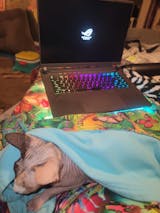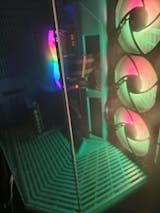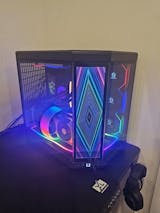It can be hard to keep track of all the different ports and cords that are used in computers. To connect devices properly and get the best results, you need to know the differences between them. This guide will help you understand the most common kinds of ports and wires you may come across.
HDMI (High-Definition Multimedia Interface)
Purpose: HDMI is widely used for transmitting high-definition video and audio from a computer to a monitor, TV, or projector.
Features:
- Audio and Video Transmission: HDMI can carry both video and audio signals, reducing the number of cables needed.
- High Resolution: Supports high resolutions up to 4K and beyond, making it ideal for modern displays.
- Types: There are several types of HDMI cables (Standard, High Speed, Premium High Speed, and Ultra High Speed), each designed to handle different resolutions and data rates.
Connector: The standard HDMI connector is easily recognizable by its 19-pin flat and wide shape. Mini and Micro HDMI variants are smaller versions used in portable devices.
DVI (Digital Visual Interface)
Purpose: DVI is primarily used for transmitting video from a computer to a monitor.
Features:
- Digital and Analog Signals: DVI can transmit both digital (DVI-D) and analog (DVI-A) signals, or both (DVI-I).
- Resolution: Supports high resolutions, but typically not as high as HDMI. Commonly used for 1080p displays.
- No Audio: Unlike HDMI, DVI does not carry audio signals, so a separate audio cable is required.
Connector: DVI connectors are larger and have multiple pin configurations depending on the type (DVI-D, DVI-A, or DVI-I).
USB (Universal Serial Bus)
Purpose: USB is used for data transfer, power supply, and connecting a wide range of peripherals.
Types:
- USB Type-A: The most common and recognizable USB connector, used in computers, keyboards, mice, and flash drives.
- USB Type-B: Typically found on larger devices like printers and external hard drives. It has a square shape with beveled edges.
- USB Type-C: A newer, reversible connector that supports faster data transfer rates and higher power delivery. It’s becoming the standard for many modern devices.
- Micro and Mini USB: Smaller versions used in older smartphones and portable devices.
Features:
- Data Transfer: USB supports varying data transfer rates, from USB 1.0 (12 Mbps) to USB 3.2 (20 Gbps) and beyond.
- Power Delivery: USB cables can also deliver power to devices, with USB Type-C supporting up to 100W.
DisplayPort
Purpose: DisplayPort is used for transmitting video and audio from a computer to a display.
Features:
- High Resolution: Supports very high resolutions and refresh rates, including 4K at 60Hz and 8K.
- Audio and Video: Like HDMI, it can carry both video and audio signals.
- Daisy-Chaining: Supports daisy-chaining multiple monitors with a single cable.
Connector: DisplayPort connectors are rectangular with one corner cut off. Mini DisplayPort is a smaller variant found on some laptops and desktops.
Thunderbolt
Purpose: Thunderbolt combines data transfer, video output, and power delivery into a single connection.
Features:
- High Speed: Extremely high data transfer rates, up to 40 Gbps.
- Versatility: Can connect to a wide range of devices, including monitors, external storage, and docking stations.
- Daisy-Chaining: Supports connecting multiple devices in a chain.
Connector: Thunderbolt 3 and 4 use the USB Type-C connector, making them compatible with USB-C devices.
Ethernet
Purpose: Ethernet is used for wired network connections.
Features:
- Stable Connection: Provides a stable and reliable network connection, ideal for high-speed internet and local network transfers.
- Different Speeds: Supports various speeds, from 10 Mbps (Ethernet) to 1 Gbps (Gigabit Ethernet) and beyond.
Connector: Ethernet cables use RJ-45 connectors, which look like oversized phone jacks.
Knowing the differences between these ports and cords will help you connect your devices properly and get the most out of what they can do. Which wire to use will make your computer experience better and more efficient, whether you're setting up a new monitor, moving data, or connecting to a network.















